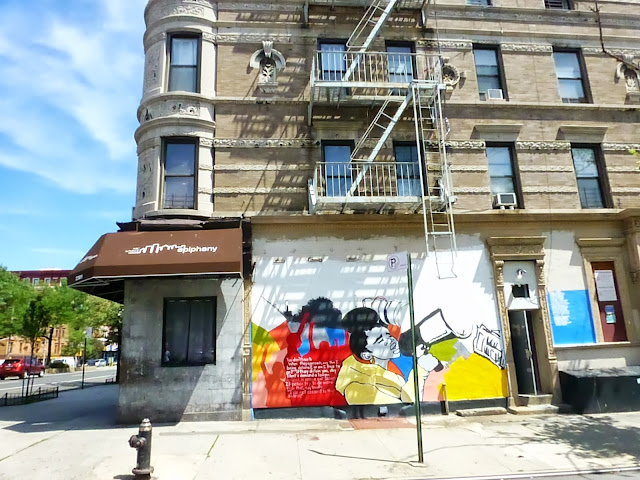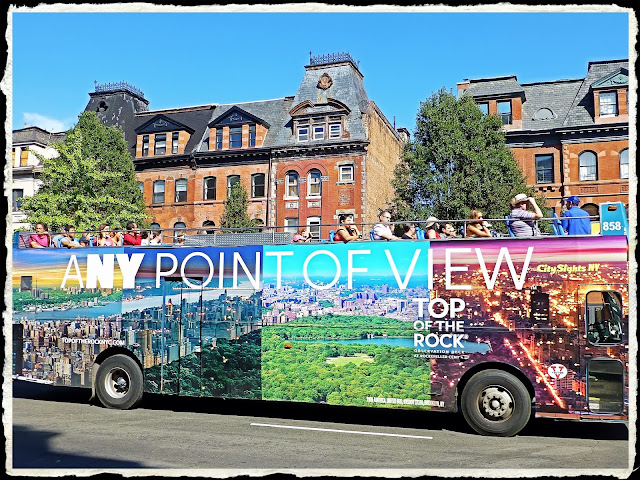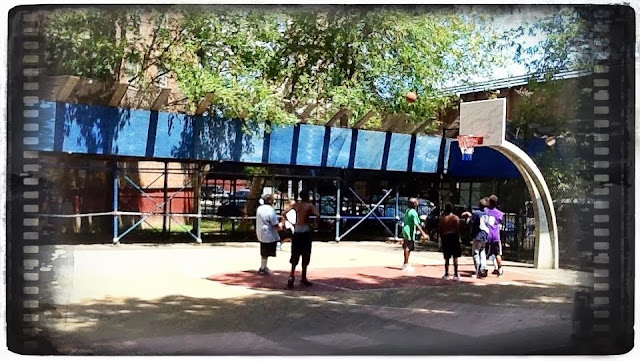The New Oswald and the Repression of Black Lives Matter
Ismaaiyl Brinsley is this era's Lee Harvey Oswald. He is the lone nut whose specious connection (read: there is no connection except that which right wing media insists on asserting) to the Black Lives Matter movement allegedly justifies the termination of that movement and the demise of public concern for the systematic murders of Black people by the American police state.
Don't let this happen. Don't let this stop the New Civil Rights Movement that you have launched in this country. Your movement has reached a critical juncture. The ideological forces that support state-sponsored racial violence and mass incarceration are looking for ways to shut you down.
The police state is now offering the public an "Oswald," a questionable figure with a lengthy rap sheet who can move the dialogue away from the police murders of 2 Black people per week since 2006. Far be it for anyone to become sympathetic with the wanton murders of innocent Black citizens. If Lee Harvey Oswald was a patsy for the murder of JFK and the whitewashing of CIA and American mafia involvement, Brinsley is being used as a patsy to implicate Black Lives Matter in violent retaliation and render the movement illegitimate.
A bit of this strategy was attempted by St. Louis County Prosecuting Attorney Robert McCulloch when he handed down the decision not to indict Officer Darren Wilson during the evening of November 25. 2014. It was a move that was certain to invite anarchist cells across the country to confuse the message. And the Ferguson Police Department added even more fuel to the fire by blocking public spaces where protesters had previously gathered and creating a perimeter around Ferguson and inviting the presence of the National Guard, using tear gas and hornet's nest grenades and rubber bullets with toxic chemical powder.
The media naturally followed the lead of the police state by reporting anarchist activity as protestor violence. This has long been a common problem in Oakland, California, where anarchist cells appear to be ready to mobilize within 30 minutes of nonviolent protests. The Daily Kos got it right in a November 2 edition, claiming: "Unfortunately, a small group of anarchists took advantage of the complete absence of police on the streets of downtown Oakland to smash windows at banks and other businesses during an afternoon "anti-capitalism" march. I was toward the back of the march and was not even aware of what was going on until I saw the smashed windows. Witnesses say it was anarchists clad in black with black flags and speculate that they came with the intention of doing this kind of thing. There were no uniformed police anywhere on the streets of downtown Oakland. It's a shame that the whole protest couldn't stay peaceful. I'm sure that media and merchants will be demanding a police presence." (http://www.dailykos.com/story/2011/11/02/1032646/-Anarchist-violence-in-Oakland#)
Brinsely and all future Brinsleys -for there will surely be more to try to dilute the power of this movement- comes in this anarchist tradition. His shooting spree met be contextualized by the facts.
1. Brinsley was allegedly a member of the Black Guerrilla Family. Although initially founded in part as a Marxist/Leninist revolutionary organization by George Jackson while incarcerated and at one time linked to The Weather Underground and the Symbionese Liberation Army, this is no longer a revolutionary movement. Since its decline in membership in the 1990s it has reorganized around affiliation with other Black street gangs and would-be Black mafia organizations including the 415s, Black Gangster Disciples, Bloods, and Crips. It has NOTHING to do with Black Lives Matter. These were the very same people who murdered Dr. Huey P. Newton on the streets of Oakland in 1989. Newton's murderer was Tyrone "Double R" Robinson, a member of the Black Guerrilla Family. Although the media has reported that the Black Guerrilla Family wanted retribution for the deaths of Michael Brown and Eric Garner, there's hardly a revolutionary bone left in this organization and they should perhaps more properly be regarded as equivalent to the anarchists and opportunists who ride on the coattails of legitimate social justice movements in order to cause dissension and spread disinformation. Remember that such tactics were central to COINTELPRO.
2. Brinsley also murdered his girlfriend before journeying from Baltimore to Brooklyn to murder two police officers. Because Black Lives really do NOT matter in this country, everyone seems to have forgotten that he murdered his girlfriend. Was her death also in retaliation for the deaths of Brown and Garner??
3. The sole piece of "evidence" that the media and the police have used to link Brinsley and Black Lives Matter is his Instagram post prior to the murders. Brinsley wrote: “Putting Wings On Pigs Today.” He added that for every “1 of Ours…Let’s Take 2 of Theirs.” He further included hashtags for Michael Brown and Eric Garner. How is this evidence that affirmatively links Brinsley to the movement? Can an Instagram post stifle a broad coalition of activists united under the causes of prison abolition and police murders? Does Brinsley's act mean that its actually okay for the police to murder innocent citizens? (http://guardianlv.com/2014/12/brooklyn-cop-killer-brinsley-boasted-about-wanting-to-kill-cops/#01WpUFiVxCu3fDkb.99).
4. No one is talking about Brinsley's mental health in the same way that every white male mass murderer is analyzed. Rarely are white mass murderers politicized. Ever notice that? Oswald was an exception, portrayed as a tool of the far left when he was most likely an instrument of the far right. White male mass murderers are always portrayed as mentally disturbed. Columbine in 1999 was a fine case in point. The actions of Eric Harris and Dylan Klebold were attributed to everything from video gaming to bullying to Goth culture and gun culture. But Harris and Klebold were neo-Nazis and virulent racists who shot an African American kid in the face during their shooting spree because he was "a nigger." And the Columbine murders occurred on the 110th birthday of Adolf Hitler. The Trench Coat Mafia that they formed sported long black trench coats and Nazi insignias as those they were posing as SS officers. (http://extras.denverpost.com/news/shot0420a.htm). How were the actions of Harris and Klebold anti-political while the Instagram post of Brinsley is definitively political???
5. Let's be clear: The Police Lives Matter Movement and the anti-De Blasio actions of the NYPD are counter-revolutionary actions designed to shift the dialogue and generate sympathy for the murderers rather than the murdered. Yes, it's awful that two cops were murdered, and no, I am not endorsing this kind of activity. When you read this blog know that you are reading the words of a passionate endorser of non-violent social protest. But Brinsley has nothing to do with Black Lives Matter.
My brothers and sisters, do not let them kill the movement by using Brinsley and the anarchists and others that will surely follow as patsies the same way that they got you to look away from the obvious collusion of the mafia and the CIA in the murder and coup d'etat of JFK. Remain grounded in the facts and keep on keeping on!







































































































